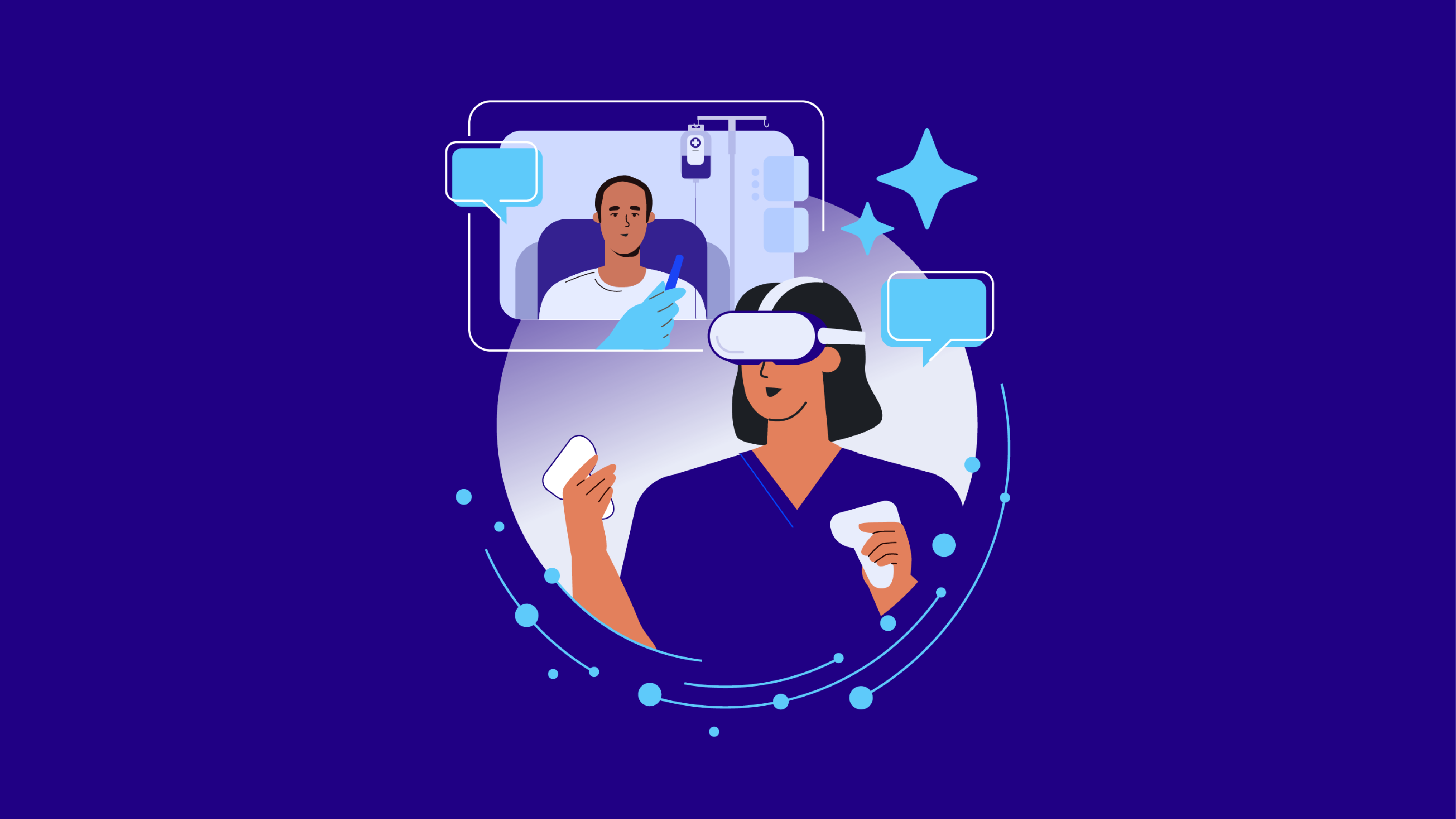Virtual Reality Simulation for Mental Health Nursing Education

Table of Contents
Name of the heading
1- Start your table with the syntax {start-table}
2 - Add an H3 Heading to create a new column (this will be the column title)
3 - List cells as bullet points in a List element
4 - End your table with the syntax {end-table}
Presentation at the Fourth Annual Tristate Regional Simulation Symposium: Virtual Reality Simulation for Mental Health Nursing Education
By Maria D’Errico, DNP, APRN, FNP-BC, CHSE, CHSOS.
As a nurse practitioner and educator, I have seen patients present with mental health disorders across the continuum of care, from primary to acute settings. It is essential that all nursing students acquire the knowledge, skills, and attitudes needed to provide safe and effective care to this vulnerable patient population. However, students may lack adequate educational preparation for providing mental healthcare due to limited clinical sites, especially during the COVID-19 pandemic. Immersive virtual reality (VR) presents a novel, exciting avenue by which this educational preparation can be delivered to students.
At the Fourth Annual Tristate Regional Simulation Symposium, I presented a paper about the use of immersive VR to enhance nursing students’ mental health assessment skills. The presentation, titled “The Use of Immersive Virtual Reality to Enhance Mental Health Assessment Skills,” highlighted the design of an immersive VR scenario focused on a patient with depression. This was a collaborative effort between myself, a nurse educator with simulation and mental health expertise, and my colleagues at UbiSim.
In the presentation I described my collaboration with UbiSim software developer colleagues to design an immersive VR scenario focused on major depressive disorder. We were inspired to embark on this project after conducting a needs assessment revealing the devastating impact of mental health disorders on patients and their families. We decided to focus the scenario on depression specifically, due to the global prevalence of this mental health illness.
Using the INACSL Standards of Best Practice as a guide, we designed the mental health scenario inside the UbiSim Editor, a web-based authoring tool for immersive VR simulations. During the scenario, participants are expected to conduct a mental health assessment, administer the Patient Health Questionnaire (PHQ)-9, and conduct a suicide risk assessment. In an innovative approach, the scenario empowers dynamic dialog between the student and the virtual patient in lieu of menu-based communication. This provides students with a realistic clinical experience and empowers them to use therapeutic communication when interacting with the virtual mental health patient.
We used an iterative design process to ensure the scenario met rigorous educational standards. Nurse educators with mental health expertise piloted the scenario and provided positive feedback on the dynamic dialog and authentic representation of a patient with depression. The scenario will be released to UbiSim partner nursing programs later this Fall to help students with developing their mental health assessment skills.By using simulation, nurse educators can provide high quality clinical experiences that prepare students to care for mental health patients. This is supported by the literature that shows simulation improves students’ knowledge, confidence, and skill when providing mental healthcare. There is also a demonstrated association between immersive VR simulation and the improvement of participants’ knowledge, attitudes, and empathy related to mental illness. The UbiSim team was honored to be a part of this project, as we continue our mission of using immersive VR to enhance the education of future nurses.
Here is a sneak peek of one of our customizable scenarios VR scenario focusing on major depressive disorder:
FAQs
Heading 1
Heading 2
Heading 3
Heading 4
Heading 5
Heading 6
Lorem ipsum dolor sit amet, consectetur adipiscing elit, sed do eiusmod tempor incididunt ut labore et dolore magna aliqua. Ut enim ad minim veniam, quis nostrud exercitation ullamco laboris nisi ut aliquip ex ea commodo consequat. Duis aute irure dolor in reprehenderit in voluptate velit esse cillum dolore eu fugiat nulla pariatur.
Block quote
Ordered list
- Item 1
- Item 2
- Item 3
Unordered list
- Item A
- Item B
- Item C
Bold text
Emphasis
Superscript
Subscript
Explore more

From 30 Minutes to 3: How AI Enhanced Analytics Transforms Debriefing Preparation
AI Enhanced Analytics: Scenario Performance Data now available in UbiSim's Version 1.19
.jpg)
Behind the Scenes: How We Brought Incisions & Dressings to Life in VR
How the UbiSim team built a VR system displaying 300+ distinct incision states—balancing clinical accuracy, technical constraints, and nursing education needs.
.jpg)
Step Inside the Room of Errors: Playful Exploration, Serious Skills
Learn how UbiSim's Room of Errors transforms nurse training through investigative play. Students spot hidden safety risks and build situational awareness.



